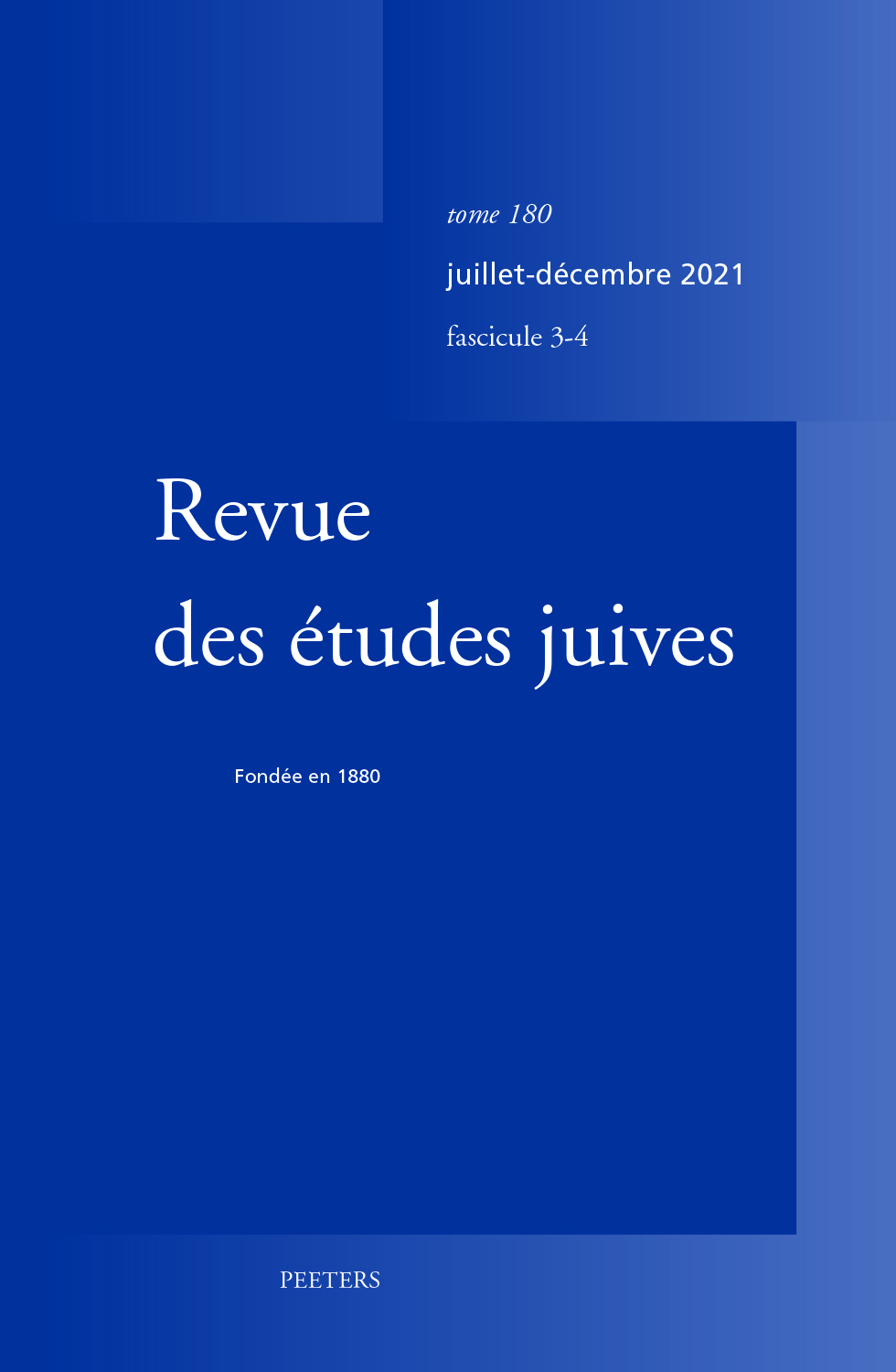 previous article in this issue previous article in this issue | next article in this issue  |

|
Document Details : Title: Le grand rabbin Alexandre Safran et le sauvetage des Juifs de Roumanie pendant la Shoah Author(s): IANCU, Carol Journal: Revue des Études Juives Volume: 167 Issue: 1-2 Date: janvier-juin 2008 Pages: 209-244 DOI: 10.2143/REJ.167.1.2030860 Abstract : Grâce au grand rabbin Alexandre Safran (1910-2006), le processus d'anéantissement des Juifs de Roumanie, commencé plus tôt qu'ailleurs, s'est arrêté aussi plus tôt. En effet, il a débuté dès l'été 1941, avec le premier grand pogrom de la Deuxième Guerre mondiale qui eut lieu à Ia≥i (Jassy) où la moitié de la population était juive, et fut poursuivi par de gigantesques massacres en Bessarabie, en Bucovine et en Transnistrie, lieu de déportation et immense cimetière sans pierres tombales d'un quart de million de Juifs roumains et ukrainiens. Le processus fut interrompu dès l'automne 1942, lorsque Alexandre Safran réussit à obtenir, avec l'aide du métropolite Nicolae Bălan de Transylvanie et du nonce apostolique Andrea Cassulo, l'arrêt des déportations des Juifs de la Transylvanie du Sud et de l'Ancien Royaume, prévues dans les camps de la mort en Pologne. Alexandre Safran incarne la résistance opposée par les Juifs de Roumanie, qui a permis à la moitié de cette communauté (plus de 360.000 âmes) de survivre. A la tête du Conseil juif clandestin, il a su prendre toutes les décisions utiles pour défendre ses frères persécutes: abolir le port de l'étoile jaune (maintenue cependant dans les provinces orientales), organiser des écoles et même une université populaire juive (le Collège Onescu, le Collège Abason et la «Polytechnique» Bercovici) pour les élèves et les enseignants chassés de l'enseignement public, faire revenir (avec l'aide de la Reine-Mère Elena) les orphelins de Transnistrie et faciliter leur émigration vers la terre d'Israël. Thanks to Chief Rabbi Alexandre Safran (1910-2006), the destruction process of Romanian Jews, launched earlier than in other countries, also ended sooner. It commenced as early as the summer of 1941, with the first big pogrom of World War II, which took place in Ia≥i (Jassy), where half of the population was Jewish, and continued with gigantic massacres in Bessarabia, Bukovine and Transnistria, the deportation place and tombstoneless cemetery of a quarter million Romanian and Ukrainian Jews. It was interrupted in the fall of 1942, when Alexandre Safran obtained, with the help of metropolitan Nicolae Bălan of Transylvania and the Apostolic Nuncio Andrea Cassulo, the postponement of deportation of the Southern Transylvania and Old Kingdom Jews to the Polish death camps. Alexandre Safran was the embodiment of the Romanian Jewish resistance, which allowed half of this community (over 360,000 souls) to survive; heading the clandestine Jewish Council, he knew how to make all the necessary decisions to protect his persecuted brothers, to suppress the wear of the yellow star (maintened, nevertheless, in the Oriental provinces), to organize schools and highschools, and even a Jewish university (the Onescu College, the Abason College and the Bercovici Polytechnics) for the students and professors banished from the public education system, to bring back (with the help of Queen-Mother Elena) the orphans from Transnistria and to facilitate emigration to Israel. |
|
